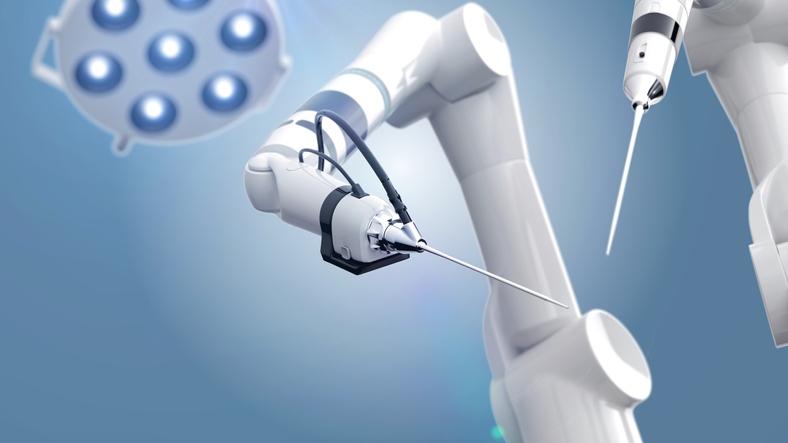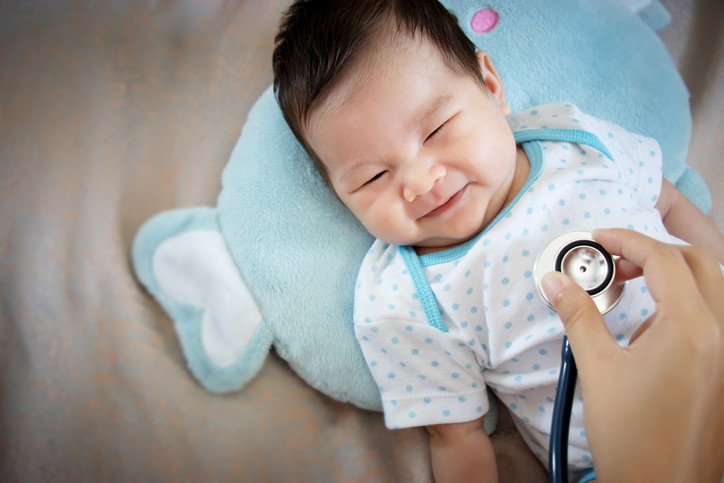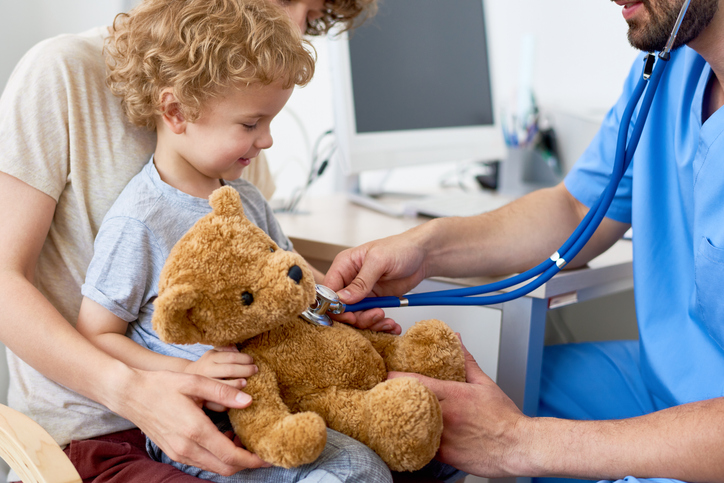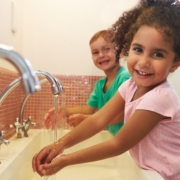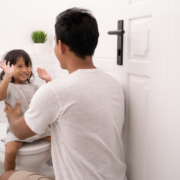Kidney Stones in Kids
What Is a Kidney Stone?
Kidney stones are hard as a rock and form in the kidney. While stones tend to be small in children, size doesn’t contribute to how bad the symptoms can be. Even a tiny stone as small as a pinhead can cause a lot of pain.
Kidney stones form the same way rock candy is made. When a high concentration of crystal-forming substances—such as calcium, oxalate, and uric acid—is present in urine and “stick together” forming into a rock.
Who Gets Kidney Stones?
Kidney stones are more common in adults but are occurring more often in kids. While there isn’t an exact reason, diet and/or obesity may play a role.
Kidney stones are also more common in warmer climates, especially the closer you get to the equator, also known as the “stone belt.” As people sweat more and urinate less, the urine can become more concentrated. Stones also have a strong genetic predisposition and tend to run in families.
How Do Kidney Stones Cause Problems?
Kidney stones are made in the renal pelvis, where urine collects before draining into the ureter. From there, it goes into the bladder and then urinated out through the urethra.
Kidney stones usually don’t hurt when they’re floating around in the kidney. The pain happens when a stone falls into the ureter to make its way out. The ureter is a small, delicate tube made to pass urine, and it’s even smaller in kids.
When a stone makes its way in there, it blocks the flow of urine from the kidney and causes everything behind the stone to swell, which causes the pain. Kidney stone pain is usually the same every time—very severe, sudden onset pain on one side with vomiting. Sometimes, there’s blood in the urine.
The pain can move from the side to the groin as the stone makes its way out. Whether a stone pass depends on its size and a child’s internal anatomy. Stones can get stuck on their way out, even the little ones.
How Do I Know If My Child Has a Kidney Stone?
It’s very hard to tell if anyone has kidney stones only from a history and physical exam. Although kidney stone pain always presents the same way, there are several possible causes of similar pain that a doctor can figure out. Often, a doctor will do blood and imaging studies like an ultrasound, x-ray, or CT scan. Your child should see a doctor or go to the ER if they are experiencing severe abdominal pain.
What Do You Do About a Kidney Stone?
If the stone is sitting in a child’s kidney and not causing symptoms, the next steps depend on a conversation between you and your pediatric urologist. Generally, it’s best to let stones pass on their own when they are small enough and there are no other complicating issues. Small stones may be observed closely with imaging studies every few months. Surgery may be recommended for bigger stones that cannot pass on their own, or for children with other issues where observation may not be a great idea. The pediatric urologists at Georgia Urology are trained to guide parents through making these decisions.
If the stone is already making its way down the ureter, there may be a good chance the stone passes on its own depending on its size, and your pediatric urologist will follow it closely to make sure it passes. This approach is called medical expulsive therapy. Your child may be prescribed pain and nausea medicine to help with symptoms, and a medication that may help stones in the ureter pass easier called tamsulosin.
It’s important to catch a stone by straining the urine every time your child urinates—during the day, night, and at school. Although stones cause a lot of pain and headache, they tend to be very, very small. Pain goes away when the stone makes it to the bladder and causes no pain when coming out of the urethra, so they are commonly missed when kids aren’t on the ball with straining. Catching the stone allows one step closer to preventing another stone from forming by sending it for analysis and letting your doctor know the stone is out. Sometimes children can have aches and pains for a few weeks after passing a stone, which can make it tricky to know if it’s really passed when the stone wasn’t caught.
Pain from kidney stones gets less severe and can even go away with time even if the stone hasn’t passed. This can be dangerous if ignored because a long-term blockage will cause the kidney to stop working. Medical expulsive therapy can go on for about 4 weeks before permanent damage happens to the kidney, so close follow-up is recommended.
Medical expulsive therapy isn’t always the best choice for every patient. Stones that are too big aren’t going to pass no matter how long you wait. Reasons to go to the emergency room while letting a stone pass include pain or nausea that can’t be controlled with oral pain medicines. Additionally, a fever in the setting of a kidney stone passing is an absolute reason to go to the emergency room as soon as possible as it can suggest a kidney infection. This can result in severe illness if not addressed.
What Are Options to Remove Kidney Stones?
Some stones can be too big, stuck for too long, or cause other problems in which waiting may not be an option. There are several ways to remove kidney stones, and the best way depends on a conversation with a pediatric urologist.
Surgery for kidney stones in kids should be done by a fellowship-trained pediatric urologist, a doctor who has undergone two extra years of training in caring for children with urologic issues and is certified as such by the American Board of Urology. Pediatric urologists perform surgery at a children’s hospital or pediatric surgery center. All surgery for kidney stones in kids is done in the operating room under general anesthesia.
Extracorporeal Shock Wave Lithotripsy (ESWL)
Extracorporeal Shock Wave Lithotripsy, or ESWL, is the least invasive method and breaks stones with shock waves applied from outside the body. There are no cuts. Your surgeon targets the stone with x-rays, breaks the stone, and then the tiny fragments or dust pass in the urine. Children go home the same day and can get back to normal activities within a few days.
Ureteroscopy
Ureteroscopy, the most common stone surgery performed in children, involves passing a very small camera through the urethra, up the ureter to the stone. It’s then broken into small pieces and/or removed with a special basket. However, it’s very common to place a small, temporary stent in the ureter before doing a ureteroscopy because the ureter is small and delicate, especially in kids, and may not be able to safely accommodate the scope. A stent gently stretches the ureter for 1-2 weeks, which allows the ureteroscopy to then be performed. Kids also go home the same day, and a temporary internal ureteral stent is also usually left in place for a few days after ureteroscopy.
Nephrolithotomy (PCNL)
Nephrolithotomy, or PCNL, is reserved for large stones or more complicated situations. A small ½ inch cut is made in the back, just over the kidney, and a camera the width of a pen is passed directly into the kidney to break and remove the stone. Children usually stay in the hospital overnight. Additionally, this surgery is also often performed in 2 separate stages.
The Stone Is Removed, What Now?
Getting the stone out is the first step in this problem. Children who form stones are almost guaranteed to form more stones at some point in life. The next step after passing a stone is to figure out why it happened. The American Urological Association guidelines on kidney stone management recommend a metabolic workup after the first stone episode in kids, specifically blood work and a detailed 24-hour urine study. These tests give us a more specific answer as to why the stones formed, and what exactly needs to be done to prevent more from forming.
A search on Google will give you endless generic kidney stone prevention recommendations that probably won’t help if they don’t address the specific problem causing your child’s stones. The goal is to discuss specific stone prevention tactics tailored to your child that may involve diet, fluid intake, medications, and/or additional testing.
If your child is experiencing symptoms of a kidney stone, call our Kidney Stone Hotline—a 24/7 appointment scheduling line—at 1-855-STONE11 (1-855-786-6311).


